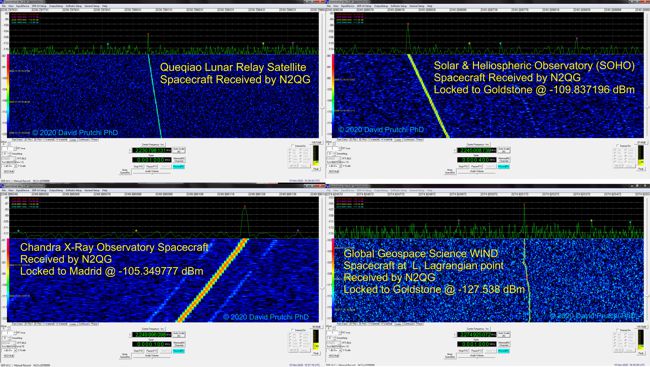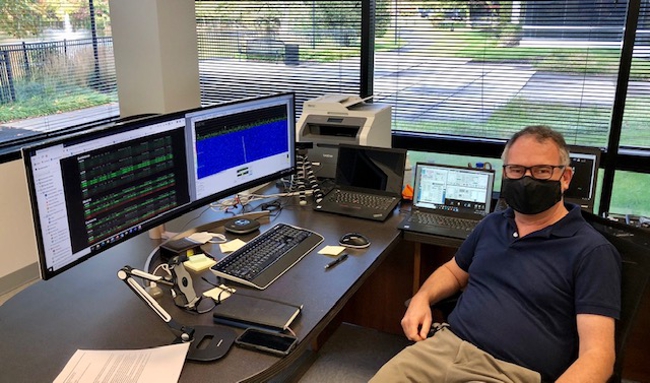I updated and greatly expanded my October 2020 whitepaper “Amateur DSN Lessons Learned (so far…).” The new version is available at: Amateur_DSN_Prutchi_2023. It is meant to supplement my presentation at the 2023 Hackaday Superconference.
Author Archives: David Prutchi
My talk at Hackaday Supercon scheduled for Sunday, Nov 5 from 11am – 11:40am

My talk on Amateur DSN at Hackaday Supercon has been scheduled for Sunday, November 5 from 11am to 11:40am. See you there!
Take an unequivocal stand for basic human decency against Hamas!

I STAND WITH ISRAEL
Dear Friends and Colleagues,
On October 7, 2023, Hamas perpetrated horrific acts of pure evil against innocent civilians in the south of Israel. Hamas continues to launch rockets against population centers with the sole purpose of causing terror, destruction, and indiscriminate death. These crimes cannot be justified under any circumstances.
Now, a week after the terrorist attack, over seven million of my brothers and sisters in Israel, and millions of Jews around the world live in anguish about the welfare of the hostages taken by Hamas, and concerned about the safety of those in our families who have mobilized to defend our existence.
I do not ask you to take a political stance in the Israeli-Palestinian conflict. In fact, I believe that the Palestinian People are victims of Iran and its puppet Hamas’ complete disregard for human life. Instead, I ask you to take an unequivocal stand for basic human decency against the senseless and barbaric acts of terrorism perpetrated by Hamas.
Silence is complicity!
Upcoming Talk at Hackaday Supercon 2023: Receiving Microwave Signals from Deep-Space Probes: Amateur DSN and the Ultimate DX.”

I’m excited to announce that I’ll be presenting “Receiving Microwave Signals from Deep-Space Probes: Amateur DSN and the Ultimate DX” at the 2023 Hackaday Superconference (Nov 3 – 5, 2023).
Moved to a new hosting service. New content coming soon!
 I got fed up with my prior hosting service, which was always slow, their servers were massively overloaded, and I could never get a straight answer from support.
I got fed up with my prior hosting service, which was always slow, their servers were massively overloaded, and I could never get a straight answer from support.
The new hosting provides really fast service, so I plan to post new content after completing the website migrations.
73
David, N2QG
A Custom Base for using the EMI/Thorn 9816B Photomultiplier Tube with the Products for Research Model TE-182 Thermoelectrically-Cooled PMT Housing for Ultra-Low Light Level Experiments

For a detailed writeup in pdf format please CLICK HERE
I’ve been planning some experiments with single-photon and ultra-low light levels. For these experiments I want the collection area to be large and for the detector to have very broad spectral response, so my preference is to use a photomultiplier tube (PMT) instead of a “silicon photomultiplier” avalanche single-photon detector.
I found a brand new EMI 9816B PMT on eBay® which meets my requirements. The 9816B is a 51 mm (2”) diameter end-window photomultiplier, with an S20 infrared-sensitive photocathode, and 14 BeCu dynodes of linear focused design. This tube features a very high gain of 25×106 A/lm under nominal conditions (2,200V) with a quantum efficiency of 21% at the peak response wavelength.
Integration time, and ultimately resolution and sensitivity for detecting single-photons or ultra-weak light levels are dependent on the noise floor (dark counts) which is a function of temperature. Cooling the PMT dramatically reduces its dark current and counts.
I bought a surplus thermoelectrically-cooled housing by Products for Research (Model TE-182) which is made for 2” end-window PMTs. I could not find a surplus base for the EMI 9816B 14-dynode PMT, so I decided to buy a surplus base for a different tube and modify it for the 9816B.

Products for Research TE-182 Thermoelectrically-Cooled Housing for 2″ PMTs
Clearing the inside of the base was a very messy affair. This is because the dynode voltage divider chain is partially potted in silicone, and the rest of the base is filled with expanding thermal-isolation foam. Part of the base is made of plastic, so the use of harsh chemical solvents or heat to remove the silicone rubber and expanding foam were not possible. I thus had to use a scalpel and dental picks to remove all this insulation and be able to disassemble the tube socket.
I built a new divider on a piece of phenolic breadboard . The base is wired for high voltage (-2,300V) applied to the cathode (through a 33k? resistor). The dynode_1-to-dynode_14 divider is built with 330k? resistors. As suggested by EMI, the cathode-to-focus (and dynode_1) is set at a fixed 300V difference using two 150V Zener diodes in series.

Results from a characterization run are shown in the following table. The room-temperature dark current agrees with the specified value. A very dramatic drop in dark current and dark count rate can be observed when the PMT is cooled.

For a detailed writeup in pdf format please CLICK HERE
Febetron/Fexitron High-Voltage 2-Stage Marx Generator Module
I have kept on making space in my lab for new projects, and came across 3 new-old-stock Marx generator modules that were made for the Fexitron and Febetron flash X-ray sources and electron accelerators. The Fexitron and Febetron devices were made in the 1970s by the Field Emission Corporation, a division of HP, which is now L-3 Pulse Sciences.
Each module contains two complete 30 kV Marx stages. In the Febetron/Fexitron pulsers, modules were stacked to form Marx generators of up to 2.3MV output. The spark gap distance is adjustable. These modules are designed for use under 20-70 psi air or nitrogen.
My intention was to build a 180 kV fast Marx with these, so I had reverse-engineered the schematic for these modules. I’m putting it here in case that someone is interested.
The following are interesting links related to Fexitron/Febetron units:
- The Hofstra Group used to carry them. They probably can still repair them.
- Picture of a 1200 MW flash x-ray tube made for the Fexitron. Beam volume was 3.5 cc (600 kV, 2000 amps, 0.2 µs).
- Febetron information from RPI.
- Field Emission Corp patent: Fexitron Febetron Marx Generator Patent US3783289
S-Band Spacecraft Receptions

After some time of not looking at S-band, today I used the 1.5m dish to receive some S-band spacecraft. My receptions for today: Wind, Chandra, SOHO, and Queqiao.
OSIRIS-REx Spacecraft Received Before Start of Sample Collection Maneuvers

I caught the last transmission of OSIRIS-REx with its high-gain antenna pointing towards Earth before it started to slew to its burn attitude. A few minutes later Goldstone reacquired it but at -154 dBm, which is much too feeble for my amateur DSN system.
The system is running automatically at home with me monitoring it from work.

OSIRIS-REx Two Days Before First Sample Collection Attempt

Sanity check after moving the X-Band system from the 1.2m offset dish to the 3.5m dish. OSIRIS-REx (Origins, Spectral Interpretation, Resource Identification, Security-Regolith Explorer) spacecraft comes in strongly two days before its first sampling attempt of asteroid Bennu.


